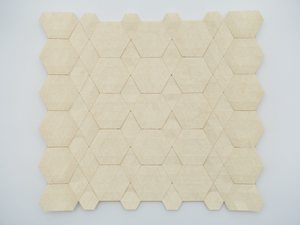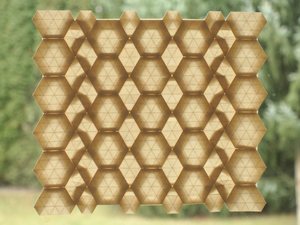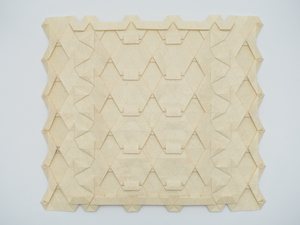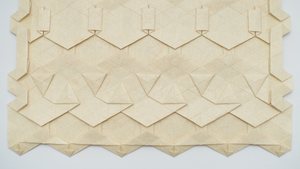Hexagons and Rhombi




This tessellation differs from most other designs by having lower rotational symmetry: only 180° rather than the 60° typical for tessellations based on a hex grid. This is more of a technique than a single pattern since each rhombus row can be substituted for a hexagon row. One way of looking at it is saying that a vertex of a rhombus can be extended into an edge, transforming the rhombus into a hexagon. In this particular work, central part is the more regular 1-1 (hexagons-rhombi) row arrangement while at the edges the 1-2 (1 row of hexagons followed by two rows of rhombi) pattern appears.
There are many ways of arranging the pleats on the back side. Here, I chose a fairly symmetric one which results in a nice layering on the front but also produces an interesting garland-like pattern on the back where there are two adjacent rows of rhombi (see the close-up image of back side).
Comments